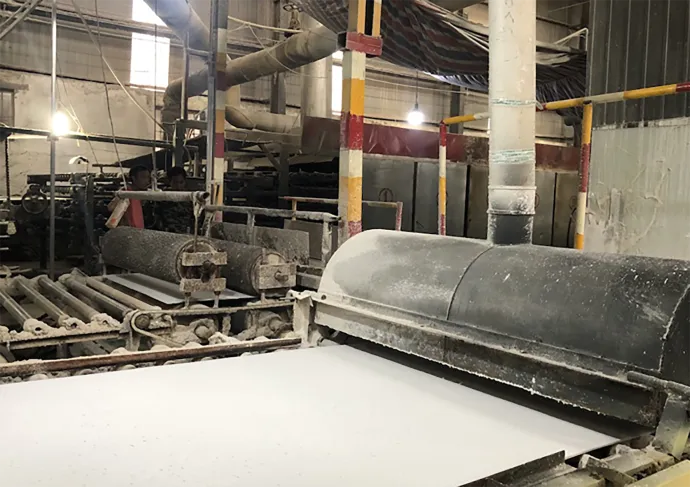- Afrikaans
- Albanian
- Amharic
- Arabic
- Armenian
- Azerbaijani
- Basque
- Belarusian
- Bengali
- Bosnian
- Bulgarian
- Catalan
- Cebuano
- Corsican
- Croatian
- Czech
- Danish
- Dutch
- English
- Esperanto
- Estonian
- French
- German
- Greek
- Hindi
- Indonesian
- irish
- Italian
- Japanese
- Korean
- Lao
- Malay
- Myanmar
- Norwegian
- Norwegian
- Polish
- Portuguese
- Romanian
- Russian
- Serbian
- Spanish
- Swedish
- Thai
- Turkish
- Ukrainian
- Uzbek
- Vietnamese
Νοέ . 13, 2024 13:59 Back to list
ceiling access panel detail
Understanding Ceiling Access Panel Details
Ceiling access panels are crucial components in building construction and maintenance, serving both functional and aesthetic purposes. These panels provide a practical solution for accessing the hidden spaces above ceilings, which often contain important systems such as electrical wiring, plumbing, and HVAC ducts. Understanding the details of ceiling access panels ensures that they are properly installed and serve their intended purpose effectively.
What is a Ceiling Access Panel?
A ceiling access panel is a removable or hinged door that is installed in the ceiling of a building. It allows maintenance personnel to access the concealed areas of the ceiling without having to remove large sections of drywall or other ceiling materials. Access panels are essential for facilities management, as they simplify routine inspections and repairs to essential infrastructure systems.
Types of Ceiling Access Panels
Depending on their intended use and the environments in which they are installed, ceiling access panels come in various shapes, sizes, and materials. Common types include
1. Flush Access Panels These panels are designed to be level with the ceiling surface, providing a seamless appearance. They are often used in residential settings where aesthetics are essential.
2. Hinged Access Panels These panels feature hinges that allow them to swing open. They are common in commercial buildings and utility areas, where frequent access is required.
3. Retractable Access Panels Some designs allow panels to slide or retract, which can save space or provide wider access. This type is particularly useful where ceiling height is limited.
4. Fire-Rated Access Panels These panels are specifically designed to resist fire and are constructed from materials that comply with building codes. They are essential in commercial buildings to maintain fire barrier integrity.
5. Insulated Access Panels Used in environments where temperature control is important, these panels are insulated to prevent energy loss and condensation issues.
Installation Considerations
ceiling access panel detail

When planning for the installation of ceiling access panels, several factors must be considered to ensure optimal performance
- Location Access panels should be strategically placed in areas where maintenance work is anticipated
. Common locations include above drop ceilings in commercial buildings, near HVAC systems, and above bathrooms or kitchens.- Size The panel size should be determined by the type of access needed. For instance, larger access panels may be necessary for servicing bulky equipment, while smaller panels may suffice for routine access to electrical junctions.
- Compatibility Ensure that the access panel selected is compatible with the ceiling type being used. Different materials and construction methods can affect the panel’s installation.
- Building Codes Compliance with local building codes and regulations is critical. Certain areas may require fire-rated or water-resistant access panels.
Maintenance and Safety
Once installed, ceiling access panels require regular maintenance to ensure they remain functional and secure. Here are some tips
- Inspect Regularly Routine inspections should be conducted to ensure the integrity of the access panel and surrounding ceiling area. Look for signs of wear, damage, or water intrusion.
- Secure Closure Ensure that panels close securely to avoid safety hazards, such as falling panels or items dropping from the ceiling.
- Safety Precautions When accessing concealed areas, maintenance workers should use appropriate fall protection and safety gear. Proper training is also essential for those who will be accessing these spaces frequently.
Conclusion
Ceiling access panels are integral to building management, providing essential access for maintenance and inspections. By understanding the different types, installation considerations, and maintenance requirements, architects, builders, and facility managers can ensure that access panels enhance the functionality and safety of any structure. Proper planning and consideration of details can lead to more efficient building maintenance, ultimately prolonging the lifespan of essential infrastructure systems. As construction technology continues to advance, the design and features of ceiling access panels are likely to evolve, offering even greater convenience and efficiency for building care.
-
Transform Interiors with PVC Gypsum Ceiling: A Stylish, Durable, and Moisture-Resistant SolutionNewsMay.19,2025
-
The Smart Interior Upgrade: Discover the Durability and Versatility of Gypsum Ceiling Access Panel SolutionsNewsMay.19,2025
-
The Smart Choice for Interior Design: Discover the Value of PVC Gypsum Ceiling SolutionsNewsMay.19,2025
-
Mineral Fiber Ceiling Tiles: The Smart Blend of Performance and AestheticsNewsMay.19,2025
-
Mineral Fiber Ceiling Tiles: The Superior Choice Over Gypsum for Sound and Fire SafetyNewsMay.19,2025
-
Mineral Fiber Ceiling Tiles: Eco-Friendly Strength and Style for Every CeilingNewsMay.19,2025







